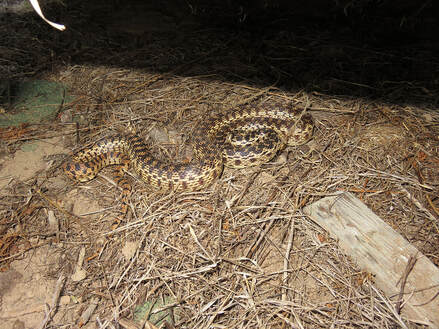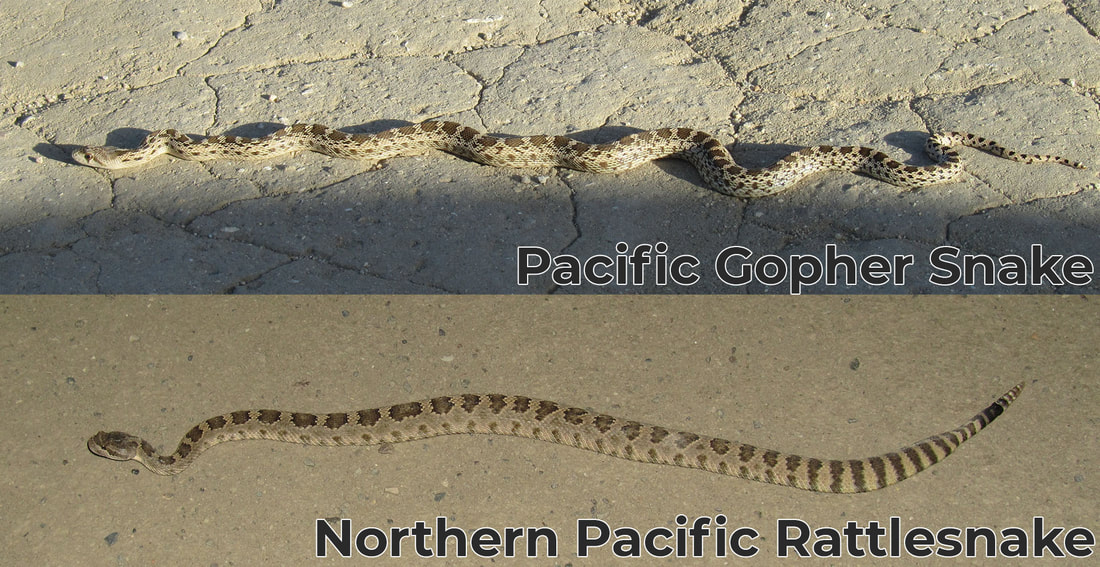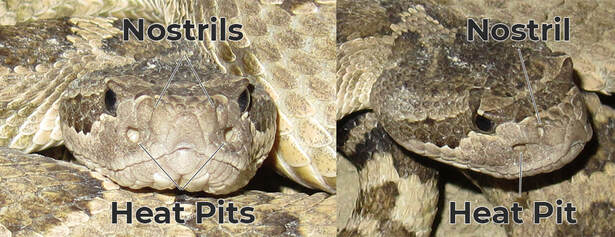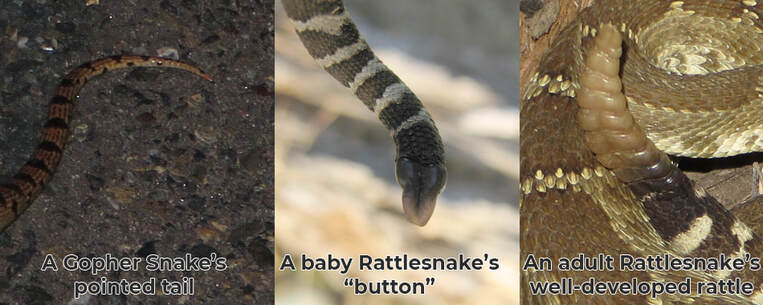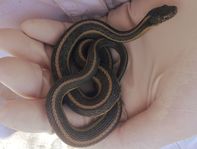Living with Wild Snakes
 California Kingsnake
California Kingsnake
While herp enthusiasts delight at finding snakes near their home, those not accustomed to snakes can find these reptilian residents an unwelcome surprise. Here we provide information and tips on living with snakes.
Why is it good to have snakes around your home?
Why is it good to have snakes around your home?
- Every creature in nature plays a vital role in the ecosystem. Snakes help to keep potential pest populations, such as rodents, in check. In turn, snakes provide a food source for many other beneficial species, such as birds of prey.
- It is not dangerous to have snakes around - they will not hunt you down or chase you. If you leave them alone and give them respect, they will not bother or act defensively towards you.
- What about rattlesnakes?! Rattlesnakes are the only venomous snakes in California, but just like other snake species, they will not act defensively unless directly provoked. Having rattlesnakes on your property provides an opportunity to teach yourself and your family about good habits to keep anytime you are in rattlesnake country - such as always looking where you step, watching where you put your hands, and consistently using a flashlight when walking outdoors on warm nights.
What if instead of killing snakes at my house, I relocate them?
- Unfortunately relocating snakes is not a good solution. Every snake has a well-established home range - a place where they know where to hide, where to get food, and know the lay of the land. When you remove snakes from their home range, they wander around constantly in search of familiar places and are far more likely to encounter people, predators, and vehicular traffic.
- Therefore, when relocating snakes long distances they can spend the rest of their lives looking for their old home, and unfortunately that life is often cut short due to the risks they encounter.
- Relocating snakes short distances is ineffective because they will likely find their way back to their home range.
- If you have one snake in your yard, that means there are others around! Removing one or more snakes often creates a false sense of security.
- Also, when you remove a snake from its home range, that creates a void that is soon filled by another snake moving into the available habitat.
I refuse to have any snakes on my property, what do I do?
How do I help prevent snakes in my yard?
Ineffective and/or dangerous methods of snake deterrence:
- While we do not advocate for relocation, it is undoubtedly a better option than killing a snake. With relocation at least snakes have a chance for survival, however small.
- Never attempt to relocate a rattlesnake (or an unidentified snake) yourself, as an untrained person is at risk for snake bite.
How do I help prevent snakes in my yard?
- Snakes like locations with plentiful sources of food (often rodents) and lots of tight, dark places to hide. Clean up piles of debris in your yard and remove any wood piles. This often helps reduce snake occurrences by discouraging both snakes and their preferred food – rodents.
- Rodents can also be attracted to your yard by leaving out dog or cat food and even bird feeders. Take in any food left out and encourage your neighbors to do so as well. Fallen fruit from fruit trees can also be a draw for rodents.
Ineffective and/or dangerous methods of snake deterrence:
- Glue traps are inhumane and indiscriminate, causing a great deal of suffering for all animals caught in them, including reptiles, songbirds, and even pets. It may take several days for a captured animal to die from dehydration/starvation or injuries caused from struggling to free itself.
- Snake repellant granules or sprays are not effective and may be dangerous to the environment and other animals. Scientists have never found a commercial product that is effective.
- Snake fences may prevent larger snakes from getting in, but most designs do not stop smaller snakes. In fact, snakes of all sizes may become caught or entangled in the mesh and it can be very hazardous. Snake fences may even trap snakes inside of your yard if they are too big to go out through the mesh. High quality snake barrier fences are expensive, labor-intensive, and none are 100% effective over time.
|
I would love more snakes in my yard, how do I attract them?
|
Living with Wild Rattlesnakes
Do you know the difference between a rattlesnake and a Gopher Snake?
- Gopher Snakes are very common, harmless, and often mistaken for rattlesnakes. In fact, they even imitate rattlesnakes by shaking their tail.
- Rattlesnakes have triangular heads and cat-like vertical pupils, but so do some non-venomous snakes.
- Rattlesnakes have heat-sensing pits in the face, but they are too small so see from a safe distance.
- Stay at least 2X the length of the snake away from it (1 foot snake = stay at least 2 feet away; 3 foot snake = stay at least 6 feet away) and look at the tail. No rattlesnake has a long pointed tail. In California, a wild snake with a long pointed tail is not dangerous. Though, newly-hatched rattlesnakes may not have a noticeable rattle, just the one nub for a rattle.
I have small children and/or dogs, how can I protect them from rattlesnakes?
- It is a great idea to start teaching kids when they are young how to live safely with rattlesnakes. After all, your kids will inevitably encounter rattlesnakes in locations outside of your yard. Above all, teach small children to leave snakes alone and alert an adult. Practicing being careful where you step, watching where you put your hands, and always using a flashlight when walking outdoors on warm nights are good habits that will help keep your child safe for the rest of their life.
- To keep your pets safe, there are many rattlesnake avoidance classes available. There is also a rattlesnake venom vaccination your pet can receive from your local veterinarian. This vaccine is not as effective as vaccinations for diseases caused by viruses (e.g., distemper, rabies) and is becoming a bit controversial among veterinarians. Talk to your vet about pros and cons.


